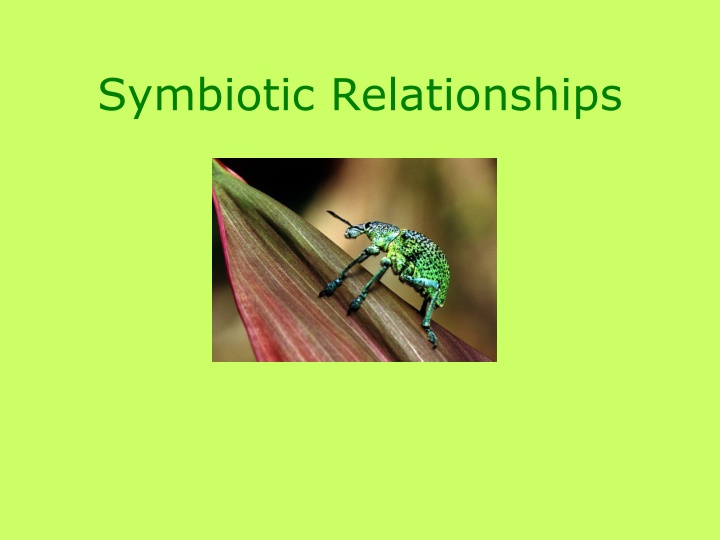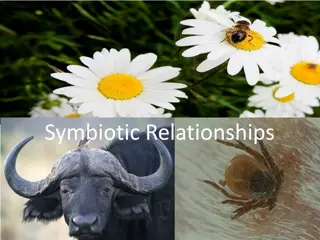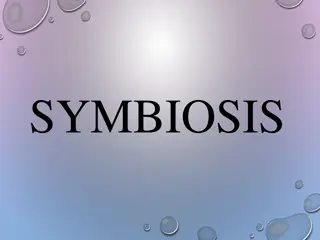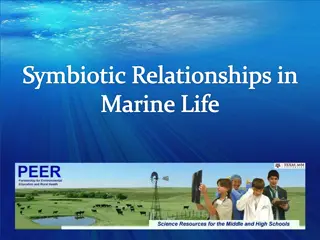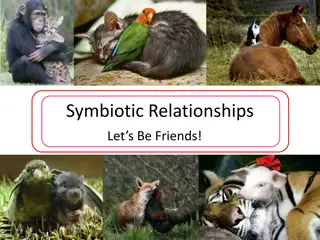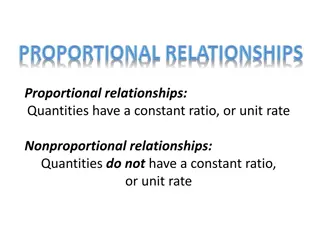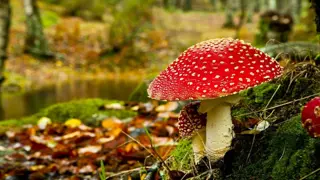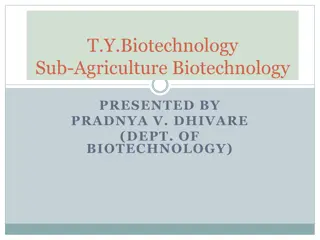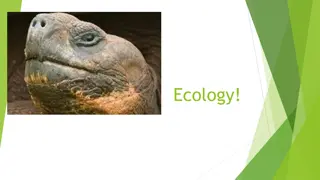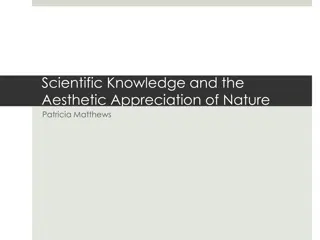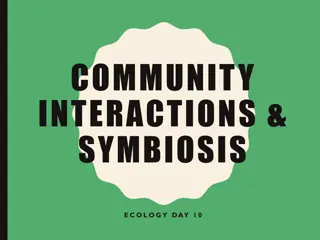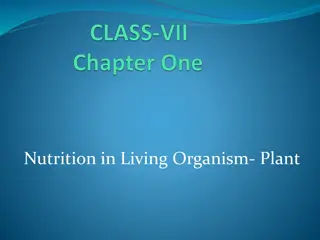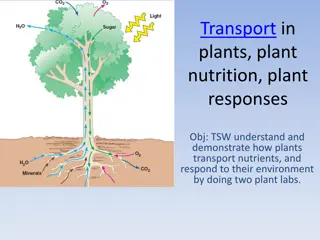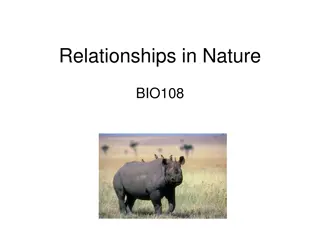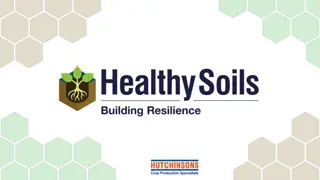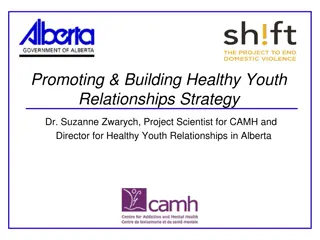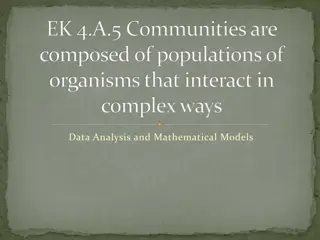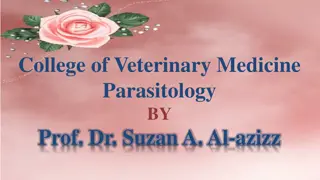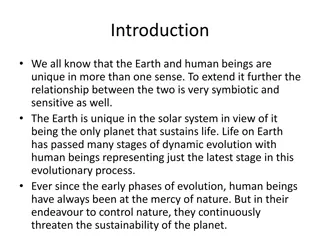Symbiotic Relationships in Nature
Symbiosis is the act of organisms living together, benefiting each other or having one organism harmed while the other benefits or remains unaffected. It includes mutualism, parasitism, and commensalism, each showcasing different types of interactions in nature. Examples such as flowers and insects in mutualism, barnacles on whales in commensalism, and parasites like tapeworms highlight the diverse relationships found in ecosystems.
Uploaded on Oct 05, 2024 | 0 Views
Download Presentation

Please find below an Image/Link to download the presentation.
The content on the website is provided AS IS for your information and personal use only. It may not be sold, licensed, or shared on other websites without obtaining consent from the author.If you encounter any issues during the download, it is possible that the publisher has removed the file from their server.
You are allowed to download the files provided on this website for personal or commercial use, subject to the condition that they are used lawfully. All files are the property of their respective owners.
The content on the website is provided AS IS for your information and personal use only. It may not be sold, licensed, or shared on other websites without obtaining consent from the author.
E N D
Presentation Transcript
What is symbiosis? Literal definition: the act of living together What it means: Two organisms that live together Temporarily or for a longer time At least one of the organisms
What are the different kinds of symbiosis? Mutualism both organisms benefit Parasitis m one organism benefits one organism is harmed Commensalis m one organism benefits one organism is unaffecte
Mutualism Both species benefit from the relationship. Ex. Flowers: Flowers provide the insects with food in the form of nectar, pollen, or other substances and the insects help the flowers reproduce by spreading the pollen.
Commensalism One species benefits, the other is neither harmed or helped. Barnacles attach themselves to a whale s skin. They don t harm the whale, but they benefit from the constant movement of water past the swimming whale, because the water carries food particles to them
Parasitism One organism lives on or inside another and harms it. Parasites obtain all or part of is nutritional needs from the other organism, called the host. Ex: Tapeworms live in the intestines of mammals Ex: Fleas, ticks, lice live on bodies of mammals, feeding on the blood and skin of the host.
Acacia plant with ant galls Ants lay eggs on acacia tree Acacia covers the infected area with brown flesh (gall) Parasitism: one benefits, one is harmed
Moray Eel with Cleaner Fish Moray Eel gets a clean mouth Cleaner Fish gets a meal Mutualism: both benefit
Cattle with cattle egrets Cattle stir up insects as they eat grass Egrets hang around and eat insects Commensalism: one benefits, one is unaffected
Clown fish with anemone Clown fish gets protection Anemone is unaffected Commensalism: one benefits, one is unaffected
Antelope with Oxbird Antelop e gets rid of parasite s Oxbird gets a meal Mutualism: both benefit
Taenia worm in human eye Worm infects human blood stream Human may go blind Parasitism: one benefits, one is harmed
